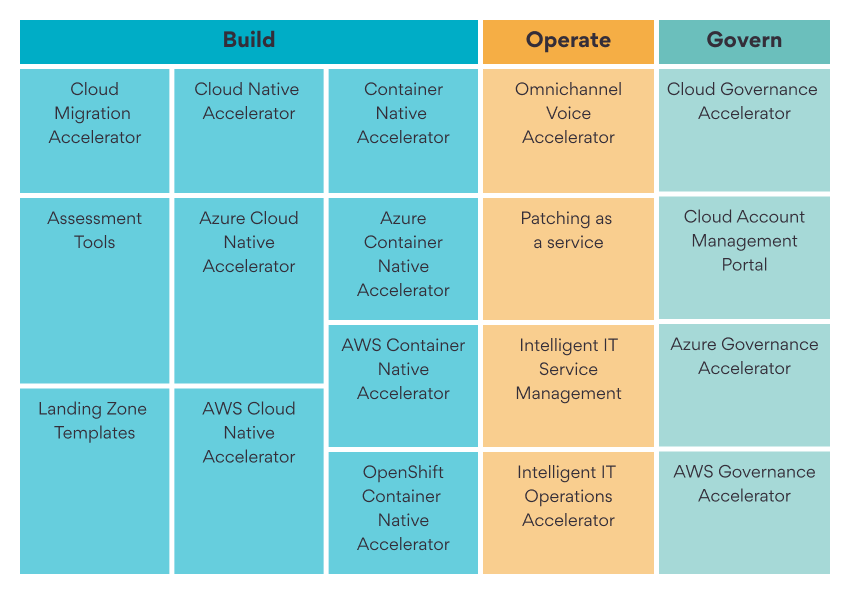Moving to the cloud can be complex. Most businesses start their cloud journey with a manual approach and end up mired in challenges as the migration progresses. The traditional, manual approach is error prone, resource intensive, and lacks scalability. To add to the complexity, each component of cloud infrastructure—server, storage, and networking—plays a pivotal role in making a cloud transition successful and requires careful planning.
These complexities heap more and more unrealistic of expectations on your teams—expectations of both technical breadth and depth in an increasingly balkanized ecosystem of services, tool chains, and methodologies. It’s becoming increasingly difficult to simplify and de-skill while keeping pace with emerging best practices.
While professional services can assist businesses with their journey to the cloud, there are some blind spots in security and governance that can easily be overlooked. We need a way to bring automation to the migration process, so that we can execute with greater efficiency and steer clear of those blind spots.
Having helped several clients with their cloud transformation journey, we have organized these steps—in coordination with a collection of tools and accelerators—into a streamlined and automated process that operates across a multi-cloud environment. The Persistent Cloud Automation Stack is a library of proven accelerators that help you build your environments faster, operate with increased efficiency and govern at scale.
The mission of Cloud Automation Stack is to consolidate best practices, common architectures and implementation patterns into code, allowing you to apply software development process and immutability to your cloud infrastructure and policies to become less reliant on tribal knowledge, ad hoc construction and manual care and feeding. Thus allowing you to reduce the complexity of design, implementation, and operation of your Cloud environment.
Cloud Automation Stack is organized under three pillars: Build, Operate, Govern.

Build
First, when you are standing up Cloud Migration Landing Zones for either Virtual Machine workload migration or refactoring your applications to run in a containerized environment. Second, when you are building Cloud Native Applications from scratch or modernizing a burning platform by leveraging a Continuous Delivery Release Process or Microservices Architecture. Terraform Modules that provision services and complex architecture patterns and CI / CD pipeline templates that provide streamlined cloud-native release processes.
Operate
When you are managing a production cloud environment that is multi-cloud, hybrid cloud with a heterogenous set of workloads spanning traditionally managed Virtual Machines, Container Infrastructure and Cloud Native Applications running on serverless or container-based technology stacks. Integration with service management tools facilitating automation and orchestration of common use cases.
Govern
When you are apply policy to enforce centralized control across that multi-cloud environment to encourage consistency and best practices in the realms of security, regulatory compliance and cost optimization. Terraform modules that apply policy-as-code enforcing enterprise governance, security, regulatory compliance, and cost management.
This is just the beginning. Stay tuned for more updates as we continue to roll out new features and start publishing Cloud Automation Stack components to community repositories.






